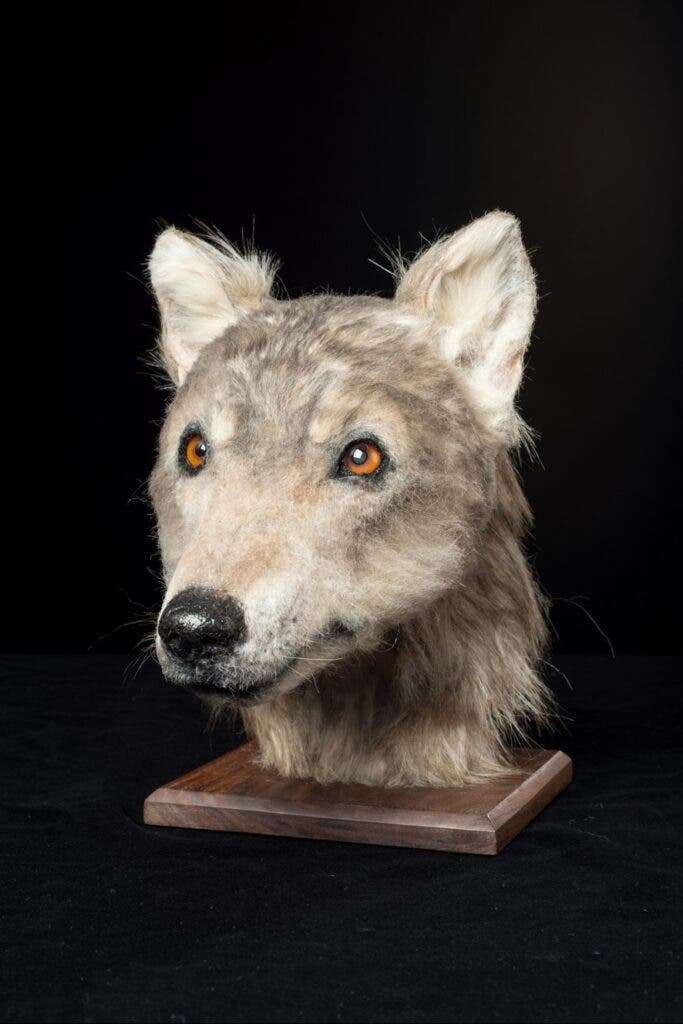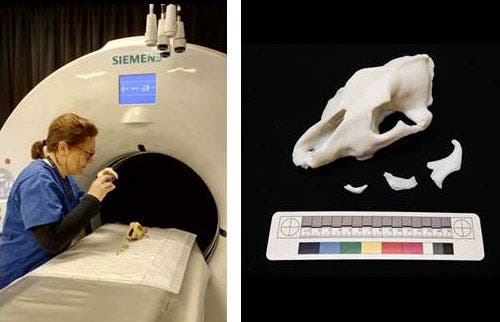The face of the world changes all the time, but the face of a good doggo is timeless. Now, we can see it.
Meet a very special Neolithic dog.

Human forensics have developed greatly in recent years, up to the point where facial reconstructions have become somewhat mundane. Not only have scientists reconstructed the faces of numerous men and women, but ancient people and even other hominid species have been reconstructed. Now, researchers have taken this to the next level and re-constructed the face of man’s best friend.
This dog lived in the Orkney archipelago, off the coast of Scotland. It was buried in Orkney 4,500 years ago, and its skull was discovered in a 1901 excavation of the Cuween Hill chambered cairn, alongside 10 other dog skulls. Now, the skull, which is in the collection of National Museums Scotland, was CT- scanned.
The digital documentation was passed by Historic Environment Scotland (HES) to forensic artist Amy Thornton, which used 3D printing to create a realistic model of the dog’s head, including muscle, skin, and hair. The process was similar to facial reconstructions done with humans. Steve Farrar, Interpretation Manager at HES, who commissioned the work, said:
“Just as they’re treasured pets today, dogs clearly had an important place in Neolithic Orkney, as they were kept and trained as pets and guards and perhaps used by farmers to help tend sheep. But the remains discovered at Cuween Hill suggest that dogs had a particularly special significance for the farmers who lived around and used the tomb about 4,500 years ago. Maybe dogs were their symbol or totem, perhaps they thought of themselves as the ‘dog people’.”

It’s the first time the figure of an animal of this age was reconstructed with such accuracy. They started with clay, using traditional methods, but based on a 3D-printed model. The resulting model gives us a fascinating glimpse at this ancient animal.
“While reconstructions have previously been made of people from the Neolithic era, we do not know of any previous attempt to forensically reconstruct an animal from this tim,” Farrar continued.
“Looking at this dog helps us better relate to the people who cared for and venerated these animals, people whose ingenuity and sophistication made Orkney such an important place in the Neolithic and who have left us with such a rich legacy of monuments today.”
There’s always a certain degree of uncertainty associated with this type of work. In human reconstructions (which also carry significant uncertainty), artists sometimes rely on potential DNA samples to determine figures such as eye and hair color, and draw from existing research on the relationship between bones and soft tissues. This is not possible in dogs, and this type of research is almost non-existent. In an email to Atlas Obscura, Thornton says she approached the project from a strictly “anatomical perspective,” comparing the dog’s skull to skulls of modern domesticated dog breeds with similar morphology.

We might not be entirely sure what the dog looked like, but it was most definitely the best dog — as all doggos are.
The project is part of a visitor center to Orkney’s chambered cairns, including Cuween Hill. For a virtual tour of the cairn, check the 3D model below, courtesy of Historic Environment Scotland (trust me, it’s worth it).






